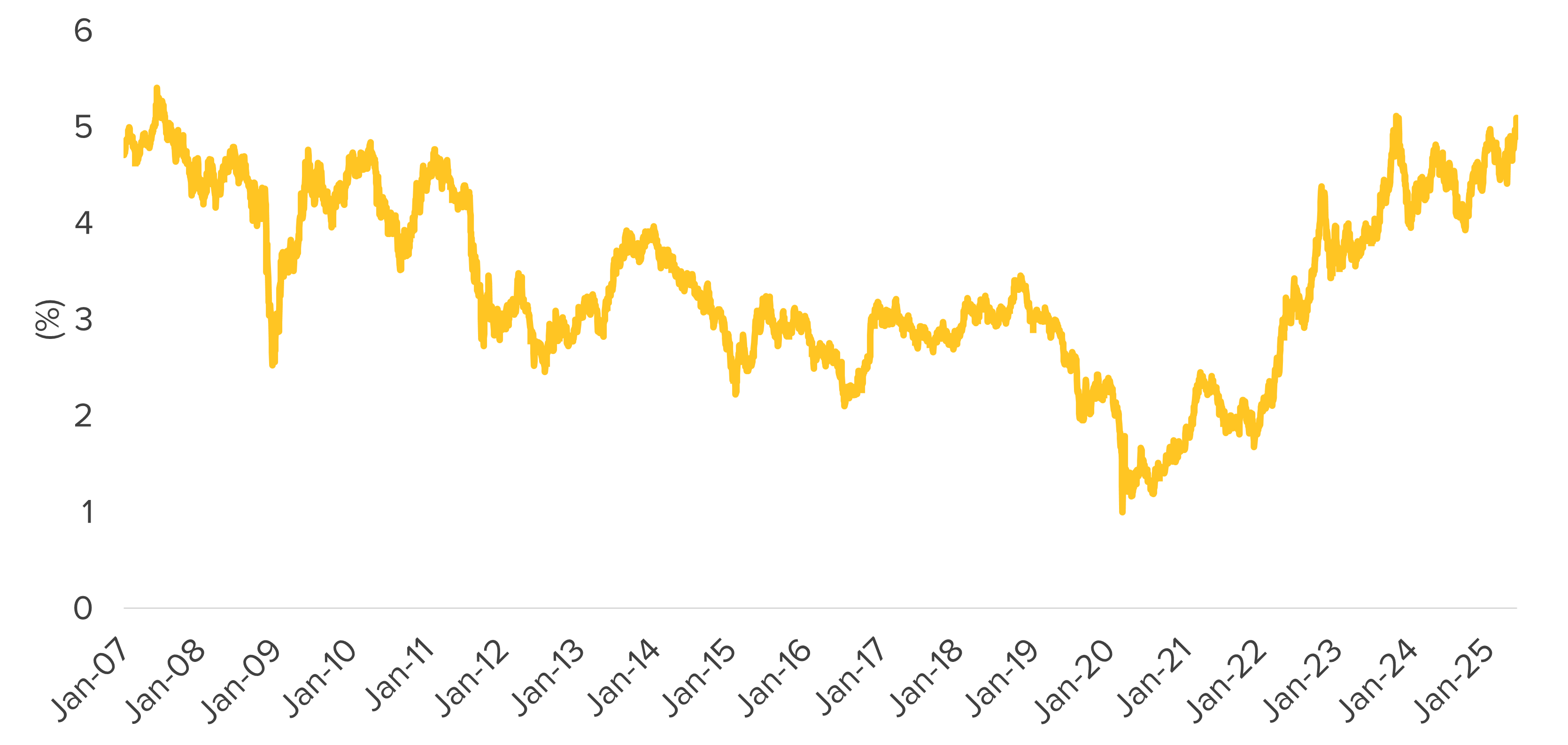The timely importance of taking a differentiated approach to diversification
Bonds these days are doing little to shore up investors’ bottom lines. In our opinion, that means it’s a good time to look elsewhere for risk mitigation.
Fixed-income investments historically have helped to diversify stock portfolios because their value tends to fluctuate less. Given the S&P 500’s wild fluctuations this year, that should mean bonds have helped provide some stability.
Unfortunately, bond prices have largely tracked stock prices, dampening their potential effectiveness as portfolio risk reducers. For example:
- Long-term bonds are down year-to-date by 1.4%.
- The yield on the 30-year U.S. Treasury has risen sharply this year and briefly hit 5.15% last week—its highest level since 2007. (Bond prices fall as bond yields rise.)
- The latest move was driven by concerns that the Republicans’ proposed tax bill would significantly increase the federal deficit.
Yield On 30-Year U.S. Treasury Bond
(as measured by the Bloomberg Long Term US Treasury Index)

Source: Bloomberg, calculations by Horizon Investments, data as of 05/23/25.
It’s not just 2025, either: Long-term bonds* have actually delivered a negative return over the past decade.
For investors, we believe the message is apparent: Relying solely on bonds for portfolio risk reduction isn’t a sure-fire approach. Other investment strategies, including derivatives, defensive equities, and tactical asset allocation, can potentially provide diversification benefits by reducing exposure to factors that may cause stocks and bonds to move in tandem.
